MEXICO
History

History
Cities in MEXICO
| Mexico city | Playa del carmen | Riviera maya |
History
First inhabitants
The first inhabitants of Mexico entered probably around 20,000 years BC. the current Mexican territory. Originally they came from Siberia and during the last Ice Age, from the Weichselian, about 40,000 years ago, by the current Bering Strait to North America via the land bridge between Siberia and America. These nomad tribes lived by hunting, fishing and gathering edible crops. Only 6,000 years BC. cultivation of the land was started. The period of 2000 BC. until 1521 AD. is often classified as follows:
The pre-classical period of 2000 BC. to 200 AD.
The classical period of 200-900 AD.
The post-classical period of AD 900-1521.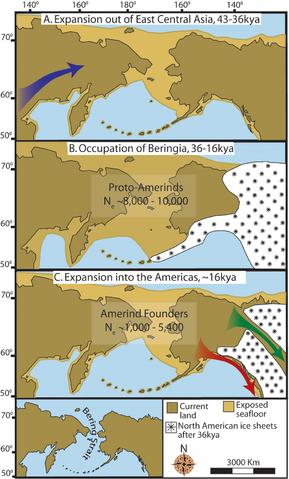 Maps depicting each phase of our three-step colonization model for the peopling of the AmericasPhoto: Buzzzsherman CC 3.0 Unported no changes made
Maps depicting each phase of our three-step colonization model for the peopling of the AmericasPhoto: Buzzzsherman CC 3.0 Unported no changes made
The cultures that flourished during those periods strongly influenced each other. In the pre-classical period, all kinds of new techniques and skills were developed, including weaving, pottery, irrigation of the land and the first writing system and a calendar. Particularly due to improved agricultural methods, the population increased rapidly and cities quickly emerged from the settlements.
Olmec and Tlatilco culture
Around 1200 BC. developed the La Venta culture of the Olmec. They were the first to shape stone and use it to make large structures such as oval-shaped pyramids and large squares. Also typical of this culture are the gigantic stone heads. The main cities of San Lorenzo, La Venta and Tres Zapotes were located in the fertile coastal region along the Gulf of Mexico. Although not much is known about the Olmecs, they are considered the mother culture of Central America. It is not known what language they spoke, but it is known that they used a calendar and the jaguar god had an important place in their religion. They also introduced wrought iron to this continent. About 200 years BC. the role of the Olmec in Central America was taken over by some other high cultures.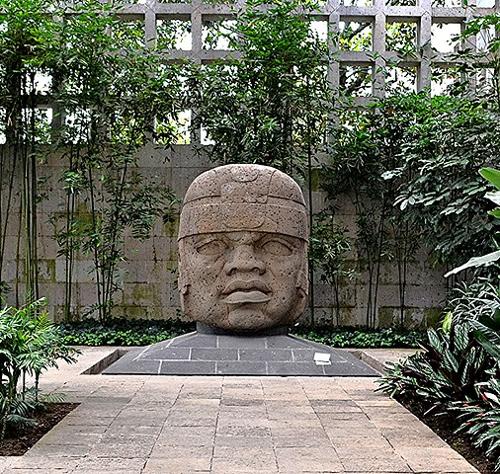 Olmec head, Xalapa, Veracruz, MexicoPhoto: Mesoamerican CC 4.0 International no changes made
Olmec head, Xalapa, Veracruz, MexicoPhoto: Mesoamerican CC 4.0 International no changes made
Another culture of the pre-classical period was the Tlatilco culture, which developed in the place where Mexico City is now located, on the Mexican plateau. At the end of the pre-classical era, two political powers remained: those of Teotihuacán and of Cuilcuilco. After Cuilcuilco was destroyed by a lava flow, Teotihuacán was left as a new center of power and developed into one of the largest and most powerful cities of the time. The heyday of this city was around AD 400 when it had more than 200,000 inhabitants. In general, it was the case that in the classical period from 200 to 900 AD. the population moved in large numbers to the cities where most of the economic life took place.
It was characteristic that most of the power was in the hands of priests and that they were able to erect impressive structures with great mathematical and astronomical knowledge. Visual art was also at a high level. Important gods were the rain god Tlaloc and the god of creation Quetzalcóatl.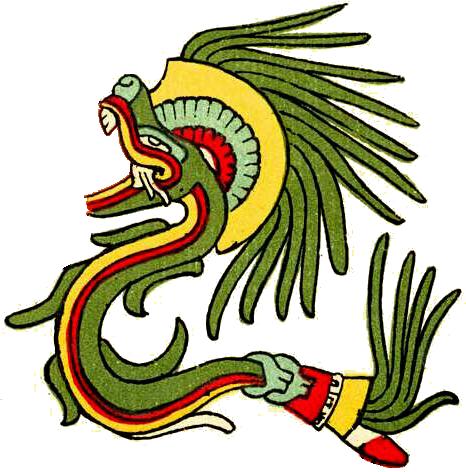 Image of Quetzalcoatl, god of creation, MexicoPhoto: Cangadoba CC 4.0 International no changes made
Image of Quetzalcoatl, god of creation, MexicoPhoto: Cangadoba CC 4.0 International no changes made
Teotihuacán's influence reached very far through trade contacts, from the southern United States to the Mayan regions of Belize, Guatemala and Honduras.
Zapotec, Mixtec and Maya
Zapotec culture developed from 300 to 800 in the valley of Oaxaca. The history of this people is also still relatively unknown, but it is clear that all kinds of small principalities united at one point and that they also made buildings of considerable size. The empire was administered from the Monte Albán hill. Between 800 and 1000 the Zapotecs were replaced by the Mixtecs with Mitla as the main city. The Mixtecs were known for the artful working of silver.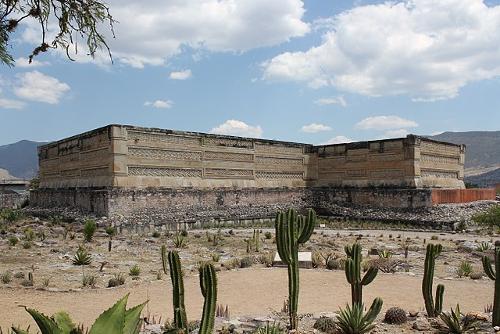 Mitla is an important Zapotec culture archeological site in MexicoPhoto: Arian Zwegers from Brussels, Belgium CC 2.0 Generic no changes made
Mitla is an important Zapotec culture archeological site in MexicoPhoto: Arian Zwegers from Brussels, Belgium CC 2.0 Generic no changes made
One civilization that reached its peak at the same time was the Mayan culture. They lived in the current states of Quintana Roo, Yucatán, Chiapas, Tabasco, Campeche and furthermore in the neighboring states of Belize, Guatemala and Honduras. The Maya did not have a central government, so each city functioned as an independent state. It was a real class society and the people believed in reincarnation.
The oldest buildings of the Maya date from the period between the 4th and the 9th century AD. and all kinds of art forms were at a high level. Also in the field of mathematics the Maya were phenomenal and had, for example, a more accurate calendar than we have now. Important half-human, half-animal gods included Itzamná (creator and god of the sky), Chac (rain god), Ix Chel (god of the moon and birth) and Ah Puch (god of death).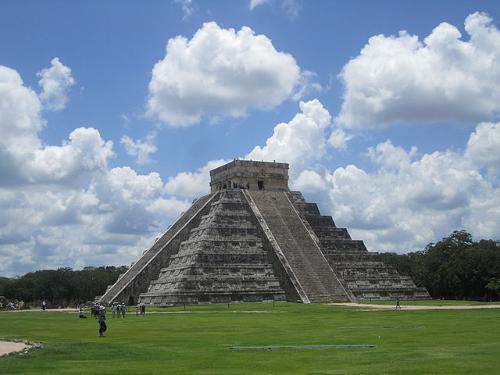 Mayan pyramid of the archaeological site of Chichen Itza, Yucatan, MexicoPhoto: Lox CC 3.0 Unported no changes made
Mayan pyramid of the archaeological site of Chichen Itza, Yucatan, MexicoPhoto: Lox CC 3.0 Unported no changes made
Toltec
In the post-classical period (900-1521), instead of the priest-kings, the military was in charge. Walled cities are typical of this period and Toltecs and especially Aztecs were important cultures.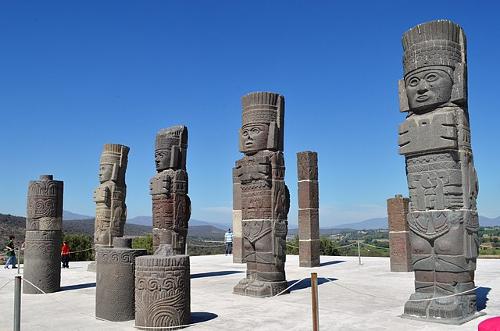 Statues in the shape of Toltec soldiers in the city of Tula, MexicoPhoto: AlejandroLinaresGarci CC 3.0 Unported no changes made
Statues in the shape of Toltec soldiers in the city of Tula, MexicoPhoto: AlejandroLinaresGarci CC 3.0 Unported no changes made
The Toltecs of Tollan were actually the successors of the city-state of Teotihuacán around 900. Tollan was about 80 kilometers north of present-day Mexico City. Human sacrifice was an important event in Toltec religion to satisfy gods. They often used prisoners of war for that and war was often waged to get them. They extended their power to the Yucatán Peninsula and southern Mexico and around the year 1000 the Maya were subdued and the city of Chichén Itzá occupied. This city slowly became a militaristic belligerent city-state and grew into the most important city in the Yucatán Peninsula. The former capital of the Toltecs, Tolla, was destroyed by the Chichimecs in 1156, after which the Toltec empire fell apart.
Aztecs
After the dissolution of the Toltec Empire, the central highlands became a battle site for hegemony that was eventually won by the Mexicas, better known as the Aztecs. The Aztecs were not much of a civilization in the early 14th century. In 1325, the construction of floating gardens in Lake Texcoco started. Mainly maize was grown in these gardens and later a huge city, Tenochtitlán, was created in the middle of the lake, with canals, bridges, palaces, sewers and a population of about 300,000. Model van Tenochtitlan, MexicoPhoto: Steve Cadman CC 2.0 Generic no changes made
Model van Tenochtitlan, MexicoPhoto: Steve Cadman CC 2.0 Generic no changes made
Like the Toltecs, their uncontrolled war drive had a religious background. They needed thousands of prisoners of war who were sacrificed to prevent natural disasters and had subdued all the peoples in that part of Mexico. How the Aztecs managed to do all this in barely a hundred years is still a mystery. At the time of the arrival of the Spanish in 1519, the absolute ruler of the Aztecs was Montezuma II.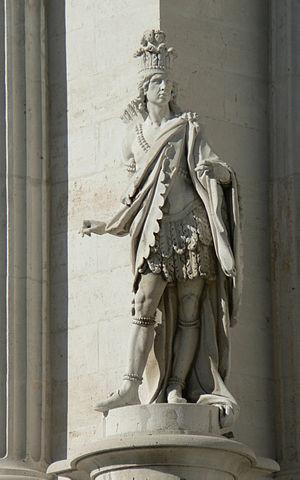 Statue of Montezuma II, MexicoPhoto: Basilio CC 2.5 Generic no changes made
Statue of Montezuma II, MexicoPhoto: Basilio CC 2.5 Generic no changes made
The two main gods of the Aztec empire were Huitzilopochtli, the sun god, and Tlaloc, the rain god. The god of creation, Quetzalcóatl, like Tlaloc, occurs under different names among different peoples.
Spanish conquistadors
It was the Spanish conquistador Hernán Cortés who was the first European to set foot on the Mexican shore with several hundred soldiers on April 21, 1519, near Veracruz. The Aztecs were friendly to him because they believed that Cortés was the god Quetzalcóatl returning from the sea. Cortés, however, unexpectedly captured Montezuma II with the help of many thousands of Tlaxcalan Indians who hoped to escape the Aztecs' terror. The Spanish used Montezuma as a hostage, but the Aztecs revolted nonetheless. Montezuma tried to prevent this but was killed by his own people.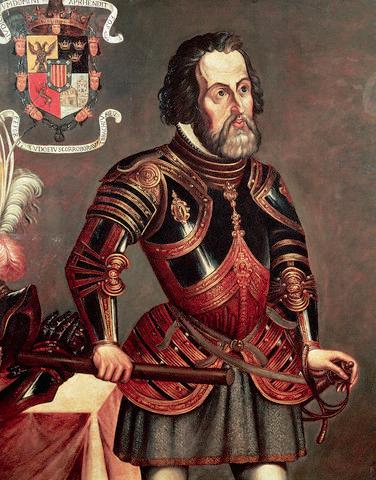 Hernán Cortés, MexicoPhoto: Anonymous CC 3.0 Unported no changes made
Hernán Cortés, MexicoPhoto: Anonymous CC 3.0 Unported no changes made
Montezuma's younger brother, Cuitláhuac, became the new leader and dealt to the Spaniards a severe blow. Many Spaniards died and they lost all the riches they had stolen in one night that would go down in history as the "noche triste". In 1521 the Spaniards attacked again and the Aztecs, now under Cuauhtémoc's leadership, lost their lives. Thousands of Aztecs were killed and the capital Tenochtitlán was also destroyed. The area was declared a colony in the name of Charles V and called New Spain. A new city was built on the foundations of Tenochtitlán and was renamed Mexico.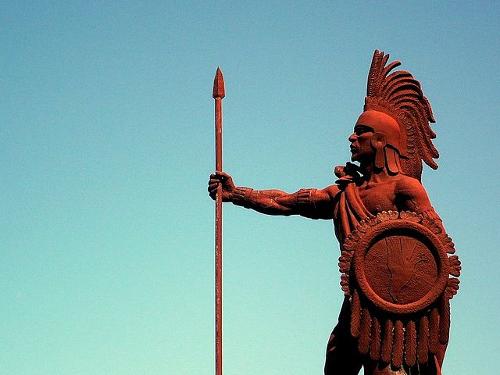 Cuauhtemoc was the last Aztec leaderPhoto: Jose Francisco Del Valle Mojica CC 2.0 Generic no changes made
Cuauhtemoc was the last Aztec leaderPhoto: Jose Francisco Del Valle Mojica CC 2.0 Generic no changes made
Forced labor, oppression and new diseases such as smallpox, caused the death of many Indians and the number fell in the 16th century from about 25 million to about 2 million. Some time later, the Spanish Crown protected the Indians to some extent. The villages were recognized as "pueblos de indios" and some land ownership was possible. The Indians had to adhere to Catholic teachings and pay taxe. In "New Spain" only pure Spaniards, the so-called "peninsulares", could hold high offices and all industrial products had to be obtained from Spain and exports, since the 18th century in particular silver, were only aimed at the motherland. Land ownership was entirely in the hands of Spaniards and the church, which was integrated into the public administration. In 1535 the new colony was given the status of viceroyalty. This system could last for centuries.
Mexico independent
At the end of the eighteenth century, the idea of independence began to take shape. It was not until 1808, after the deposition of the Bourbons in Spain, that the first major revolts against the system broke out. On September 16, 1810, army captain Ignacio Allende and priest Miguel Hidalgo y Castillo, together with Creoles, Mestizos and Indians, entered into battle with the Spaniards (Grito de Dolores = the cry of Dolores). Although the battle was lost in 1811, that day is still commemorated as the day the struggle for independence began.
In 1815 the authority of the Spanish viceroy was restored. In 1820 a liberal constitution was promulgated in Spain and this was the signal for the Spanish colonists to declare independence. Spain sent an army led by General Iturbide, which, however, defected to the insurgents. Independence was proclaimed on September 17, 1821 and Iturbide was crowned Emperor as Agustín I. In 1822 Iturbide was overthrown by the liberals led by Antonio López de Santa Ana.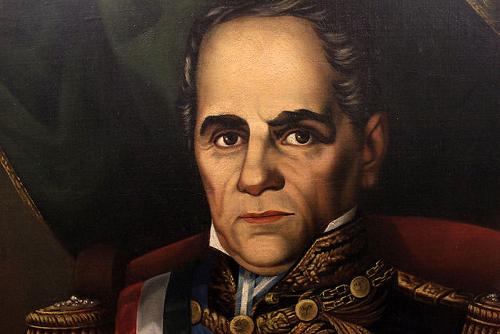 Antonio Lopez de Santa Anna, MexicoPhoto: Yinan Chen in the public domain
Antonio Lopez de Santa Anna, MexicoPhoto: Yinan Chen in the public domain
The population at that time consisted for more than 80% of Indians and Mestizos of Hispanic Indian descent. They were from bad to worse because the new president Santa Ana was not interested in the poor population. For example, the "pueblos de indios", the laws that protected Indians and farmers a little, soon disappeared.
A federalist-republican constitution was enacted in 1824 after the states of Central America separated from Mexico. In the period 1821 to 1857, many coups d'état took place as a result of contradictions between different political currents, but also by soldiers who competed for power. Santa Ana held the presidency several times during that period. In 1829, Spain made a futile attempt to reclaim Mexico and Veracruz was occupied by the French due to an unpaid debt.
War with the United States
While Santa Ana was ruling, the United States started a war against Mexico. The weak Mexican army could not prevent Mexico City from being occupied by the Americans in 1847. Earlier (1836) the Mexicans had already lost the state of Texas and were forced to cede more than half of their territory, including present-day California, central Mexico, Arizona and parts of Colorado, Nevada, Kansas, Utah and Oklahoma. Texas joined the United States in 1845.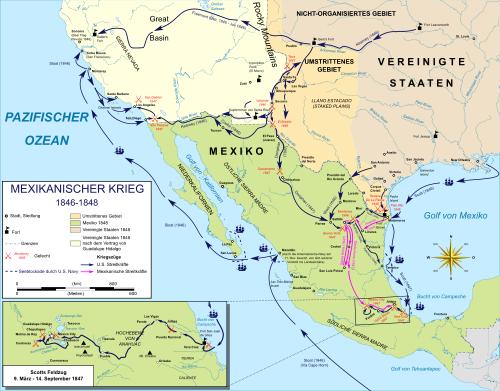 Overview Mexican WarPhoto: Kaidor CC 3.0 Unported no changes made
Overview Mexican WarPhoto: Kaidor CC 3.0 Unported no changes made
Despite this humiliation, Santa Ana managed to remain president and proclaimed himself dictator in 1853. Despite everything, he was still supported by conservative movements in the country and by the army, the church and the landowners. To protect their position, it was to their advantage to keep the political situation as it was. The liberals, on the other hand, strongly advocated a free market economy and a separation of church and state.
Period Benito Juárez
In 1855 Santa Ana was deposed by the liberals led by the Zapoteek Indian Benito Juárez. He made a new constitution that included the right to free education and freedom of religion and expression. The division between church and state and, very important for the population, the redistribution of the many land that the church owned, were also regulated by the constitution. The Conservatives revolted, but the three-year war was won by the Liberals.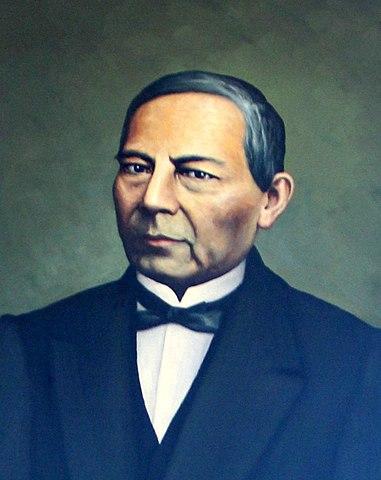 Benito Juárez, MexicoPhoto: Avery Jensen CC 4.0 International no changes made
Benito Juárez, MexicoPhoto: Avery Jensen CC 4.0 International no changes made
The civil war had cost a lot of money and Mexico could no longer meet its financial obligations to Spain, England and France. These countries decided to intervene, Spain and Great Britain withdrew when they realized that France was planning to make a protectorate of Mexico. In 1863, Mexico was occupied by Napoleon III and Archduke Maximilian of Austria was appointed Emperor of Mexico by the French. He was the brother of the Austrian Emperor Franz-Josef. This occupation lasted only a short time because in 1867 Maximilian was defeated and executed and Benito Juárez was again president of Mexico.
Mexican Civil Revolution led by Emiliano Zapata and Pancho Villa
After the death of Juárez in 1872, General Porfirio Díaz seized power in 1876 and remained so until 1911. The poor people suffered under dictatorial rule that at one point could no longer even provide enough food, especially maize. Only profitable export products such as coffee, tobacco and sugar were grown. The industry did flourish due to a well-constructed railway network and a developing mining and oil industry. However, the profits from this largely disappeared abroad and in the long run Diaz was no longer able to face the growing popular resistance.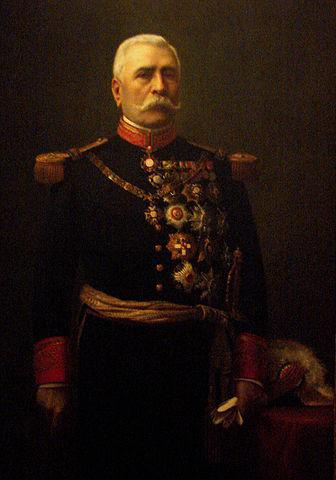 Porfirio Díaz, MexicoPhoto: El Ágora CC 3.0 Unported no changes made
Porfirio Díaz, MexicoPhoto: El Ágora CC 3.0 Unported no changes made
In 1911 the revolution broke out with the main figures as Francisco Madero, Álvaro Obregón, Venustiano Carranza, Pancho Villa and Emiliano Zapata, with his slogan "tierra y libertad", land and freedom. Díaz was ousted and Francisco Madero became the new president who was no match for the landowners and made a weak impression. Pancho Villa and Emiliano Zapata felt cheated. Another coup was committed by Victoriano Huerta who killed Madero, but was defeated again in 1914 by Carranza, Obrégon, Villa and Zapata on the other.
Villa and Zapata's land reform plans went way too far for Caranza and Obrégon; they were in favor of a modern, industrialized society. However, Zapata in particular continued to demand that the large landowners be expropriated in favor of the small farmers, the "capasinos". Carranza, meanwhile, had become the new leader of Mexico and went to war against his former companions Villa and Zapata. In December, the army of Villa and Zapata entered Mexico City.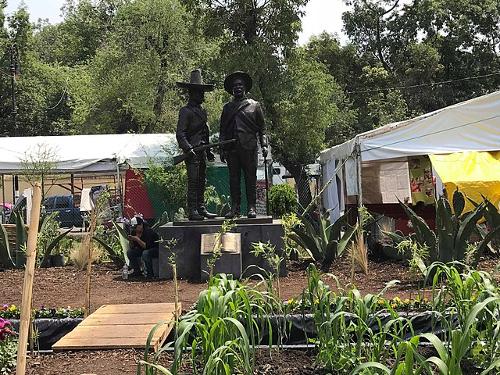 Commemorative statue of Villa and Zapata, MexicoPhoto: Diego M.P. CC 4.0 International no changes made
Commemorative statue of Villa and Zapata, MexicoPhoto: Diego M.P. CC 4.0 International no changes made
However, Carranza and Obrégon were allowed to reorganize and Villa and Zapata withdrew, after which Obrégon put Villa's army to flight. Zapata withdrew to the state of Morales and expropriated the landowners there. Supported by the farmers there, Zapata waged a guerilla war against Carranza and Obrégon. In 1917, Carranza drafted a new constitution that enshrined revolutionary ideas, including an eight-hour workday and major land reform proposals.
The civil revolution came to an end after this, but more than one million Mexicans had lost their lives. Nevertheless, even after the new constitution of 1917 it remained very restless and a power struggle took place between the revolutionaries. This battle cost many victims. Zapata was ambushed and murdered by the government army on April 10, 1919, and Villa was murdered in 1923. In 1920 President Carranza was assassinated. Initially, after the revolution little came of the land reforms. It was only under the Obrégon government that agricultural reforms and the renewal of social legislation took place.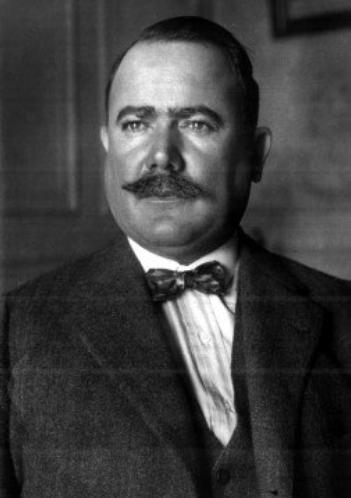 Álvaro Obregón, MexicoPhoto: Instituto Nacional de Antropología e Historia CC 3.0 Unported no changes made
Álvaro Obregón, MexicoPhoto: Instituto Nacional de Antropología e Historia CC 3.0 Unported no changes made
Mexico under Presidents Callas, Cárdenas, Alemán, López Mateos and Díaz Ordaz
President Callas came to power peacefully in 1924. He came into conflict with the powerful Mexican Church over the anti-clerical provisions of the constitution. The conflict grew into a revolt of the so-called "cristeros" that was crushed in 1929.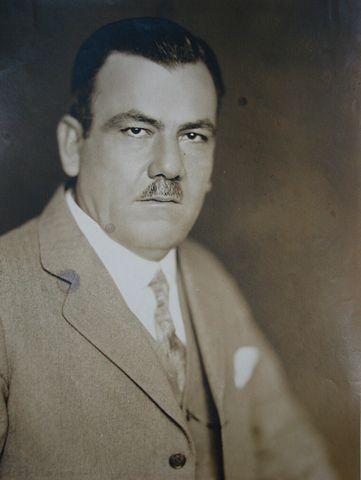 Plutarco Elías Calles, MexicoPhoto: Aurelio Escobar Castellanos CC 2.5 Generic no changes made
Plutarco Elías Calles, MexicoPhoto: Aurelio Escobar Castellanos CC 2.5 Generic no changes made
In 1929, the National Revolutionary Party was created to bring together all revolutionary groups. It soon became apparent that in this way the party and the government could keep power in a small group and trade unions and farmers' unions became puppets of the government. After President Calles, Lázaro Cárdenas was elected president in 1934. He kept his word and began to expropriate the landowners. Until 1940, 19 million hectares were expropriated under his rule, despite armed resistance from the large landowners.
The land was divided among the farming communities divided into "ejidos", state lands that were worked together. Another important decision was also made by him after a wage dispute between the North American and British oil companies and the workers. In 1937 he nationalized all foreign oil companies to get out of the deadlock.
In 1942, Mexico joined the Allies and declared war on Germany, Italy, and Japan.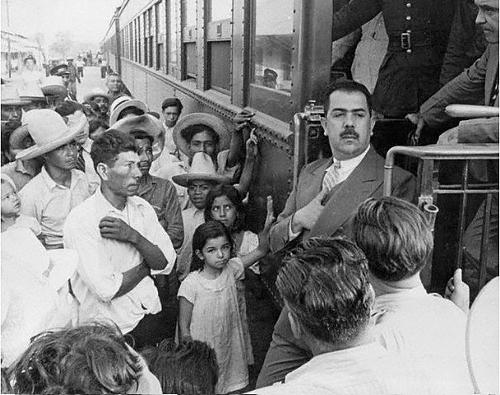 Lázaro Cárdenas, MexicoPhoto: Doralicia Carmona Dávila CC 2.5 Generic no changes made
Lázaro Cárdenas, MexicoPhoto: Doralicia Carmona Dávila CC 2.5 Generic no changes made
In 1946 the name of the NRP was changed to Institutional Revolutionary Party (PRI: Partido Revolucionario Institucional). This happened under Mexico's first civilian president, Miguel Alemán. Under him and his party, the economic and technological development of Mexico was central but social justice fell out of the picture. Until now, this party is still in charge in Mexico and, for example, controls the entire government apparatus. The opposition has little to say. The political situation has been somewhat liberalized in recent decades. For example, a tradition has grown that a center-right president is succeeded by a center-left president. One such center-left presidents was López Mateos who came to power in 1958. In his policy he again focused on land reform and the division of large land ownership, typical left-wing favorite topic. The conservative Díaz Ordaz ruled from 1964 to 1970, and he again focused more on the expansion of the industry.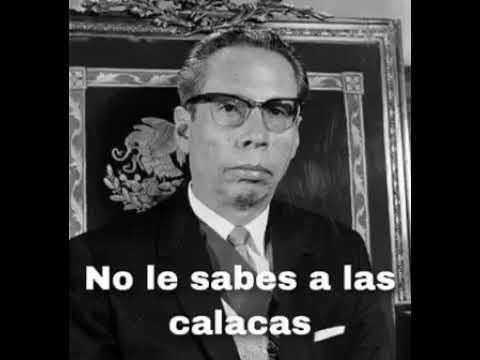 Gustavo Díaz Ordaz, MexicoPhoto: MagnoGunslinger CC 4.0 International no changes made
Gustavo Díaz Ordaz, MexicoPhoto: MagnoGunslinger CC 4.0 International no changes made
Student uprisings and economic downturn
In the late 1960s, opposition to the existing system began to grow in some sectors, both within and outside the ruling party.
In July 1968, shortly before the start of the Olympic Games, students demanded radical reforms. The demonstrations were broken up and more than 500 students and workers were killed. Many students fled into the mountains to wage guerrilla warfare from there.
In the 1970s, under the rule of Luís Echeverría Álvarez, Mexico borrowed billions of dollars abroad to boost the industry. The oil industry in particular should save Mexico from the financial collapse, which was caused, among other things, by the enormous population growth. However, oil prices fell sharply and Mexico was unable to repay its debts. Inflation soared, living standards fell, unemployment rose and there was no more money for better education and health care.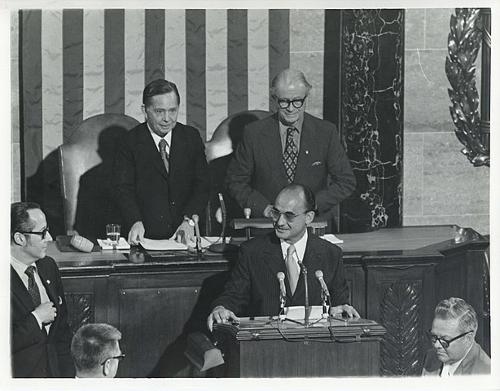 Luis Echeverría Álvarez, MexicoPhoto: Carl Albert Research and Studies Center, Congressional CollectionCC 4.0 no changes made
Luis Echeverría Álvarez, MexicoPhoto: Carl Albert Research and Studies Center, Congressional CollectionCC 4.0 no changes made
Under Álvarez, efforts were also made to modernize the PRI and liberalize the political system, but domestic problems continued to haunt him. As far as foreign policy is concerned, he strived for a more independent position from the United States. Conservative López Portillo y Pacheco came to power in 1976 and tried to combat the economic crisis through private sector stimulation and tight wage policies.
Private banks were also nationalized under López Portillo. Increasing oil exports also fueled economic growth, but corruption was also rampant. When another economic crisis broke out in 1982, López Portillo nationalized the private banks. At that time, the government was no longer able to pay off its foreign debts and tried to use this measure to strengthen government control over the economy.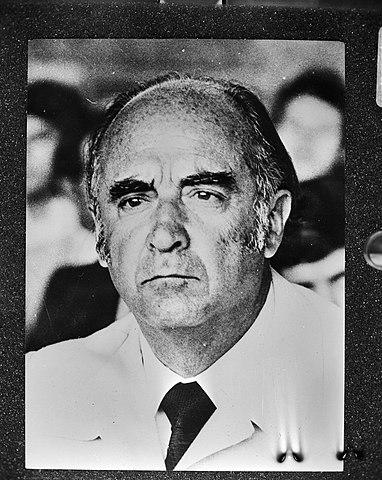 José López Portillo, MexicoPhoto: Anefo in the public domain
José López Portillo, MexicoPhoto: Anefo in the public domain
López Portillo stepped down in 1982 and was succeeded by Miguel de la Madrid Hurtado. He sought the solution in strict austerity, liberalization of the economy and the privatization of state enterprises. Following congressional elections in 1985 and governor elections for some states in 1986, the Hurtado government was charged with electoral fraud. On September 19, 1985, Mexico City was hit by an earthquake that killed about 20,000 people. Again, allegations of corruption and negligence followed, including the control of building permits.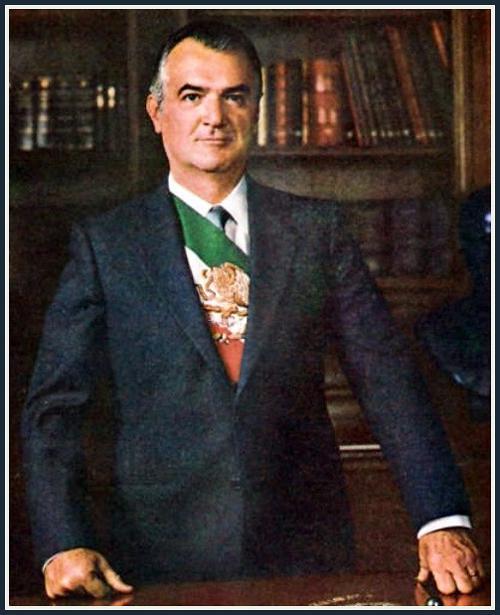 Miguel de la Madrid Hurtado, MexicoPhoto: Wendolyne78 (CC BY 2.0) no changes made
Miguel de la Madrid Hurtado, MexicoPhoto: Wendolyne78 (CC BY 2.0) no changes made
Hurtado was succeeded on December 1, 1988 by Carlos Salinas de Gortari. He was nominated as a candidate by the PRI party leadership after serious internal problems in that party. In November 1989, the PAN (Partido Accíon Institucional) candidate was elected Governor of Baja California Norte State. For the first time in 60 years, an important office was held by someone from the opposition. Salinas tried to do something about corruption and arrests of senior police officers and trade unionists followed. After congressional elections, some governors were forced to resign on corruption charges.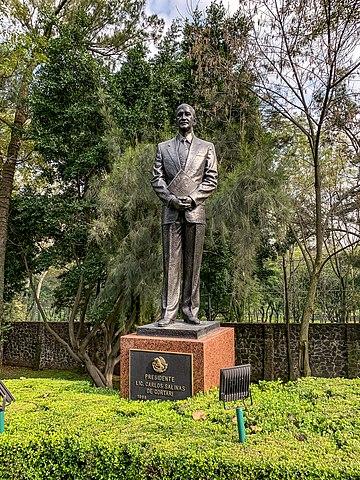 Statue of Carlos Salinas de Gortari, MexicoPhoto: Drkg CC 4.0 International no changes made
Statue of Carlos Salinas de Gortari, MexicoPhoto: Drkg CC 4.0 International no changes made
Chiapas state: scene of uprisings and violence
In the southern state of Chiapas on January 1, 1992, an uprising broke out by armed Indian farmers. They demanded far-reaching economic and social changes in their region. Army posts were regularly raided from May 1993 and in January 1994 some towns were occupied by guerrillas of the EZLN (Zapatista National Liberation Army), consisting of Tzotzil, Tzeltal, Tjolabal, and Chol Indians. In March, some demands from the EZLN were granted, but after election fraud and the appointment of a PRI candidate (Eduardo Robledo Rincón) as governor of Chiapas, the EZLN rebelled again. The EZLN demanded his resignation, but President Zedillo, who has now taken office, refused to comply. Not much later Robledo resigned anyway.
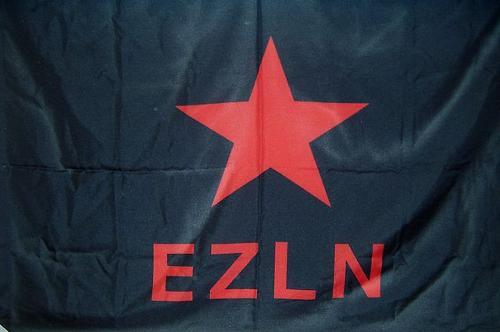 Flag of the EZLN, MexicoPhoto: Lucha CC 3.0 Unported no changes made
Flag of the EZLN, MexicoPhoto: Lucha CC 3.0 Unported no changes made
In November 1993 a free trade agreement was concluded with the United
States and Canada, the NAFTA (North American Free Trade Agreement).
In March 1994, the PRI's presidential candidate, Luís Donaldo Colosio, was assassinated. At the end of that year, the secretary general of the PRI, José Francísco Ruiz Massiau, was also murdered.
The presidential elections of August 1994, meanwhile, had been won by PRI candidate Ernesto Zedillo, but had a strong fraudulent character. Zedillo promised that democratization and reform of the judiciary would continue. In the simultaneous parliamentary elections, the PRI was defeated and lost 24 seats in the House of Representatives. There was also opposition in the Senate for the first time. The ongoing problems in Chiapas hit the economy and Zedillo was forced to declare an economic emergency program.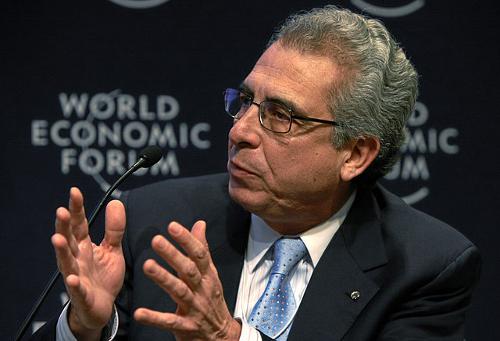 Ernesto Zedillo Ponce de León, MexicoPhoto: World Economic Forum CC 2.0 Generic no changes made
Ernesto Zedillo Ponce de León, MexicoPhoto: World Economic Forum CC 2.0 Generic no changes made
The PRI suffered significant defeats in state and municipal elections, but retained power in 28 of 32 states and 85% of municipal councils.
In March 1995, the US anti-drug agency DEA announced that it had evidence that former president Carlos Salinas held $ 500 million in many bank accounts in nine different countries. This wealth would consist of kickbacks from the cocaine mafia.
Under pressure from the peasant uprising and the peso crisis, President Zedillo reached an agreement in January 1995 with the three largest opposition parties on democratic reforms. As a result of the peso crisis, Mexico experienced the worst depression in its history in 1995. The United States (Clinton) contributed more than $ 12 billion with a rescue plan. In March 1996, Raúl Salinas, brother of former president Salinas, was officially charged with the murder of Colosio. Raúl Salinas de Gortari, MexicoPhoto: 1995egv CC 4.0 International no changes made
Raúl Salinas de Gortari, MexicoPhoto: 1995egv CC 4.0 International no changes made
In municipal elections in November 1996, the PRI suffered major defeats in several states, especially in the important state of Mexico. In the July 1997 parliamentary elections, the PRI lost the absolute majority in favor of the social-democratic PRD for the first time in its 70 years of existence. In December 1997 violence in the state of Chiapas renewed when 45 unarmed Indians in the village of Acteal were killed by a paramilitary organization. It was later revealed that the weapons and uniforms had been provided to them by the PRI governor of the region. As a result of this massacre and the deadlock in negotiations with the Indians of Chiapas, the Minister of the Interior Emilio Chuayffet was fired in January 1998.
In 1999 the number of soldiers in Chiapas was increased to more than 60,000. The violation of human rights was widely criticized, including by the United Nations Special Reporter on Human Rights, Mary Robinson. State elections showed a recovery of the PRI, but in early July 2000, the presidential elections were surprisingly won by Vicente Fox Quesada of the PAN who assembled a government team of mostly technocrats and industrialists. This ended the 70-year reign of the PRI, the longest ruling party in the world. Quesada has been in office since December 1, 2000.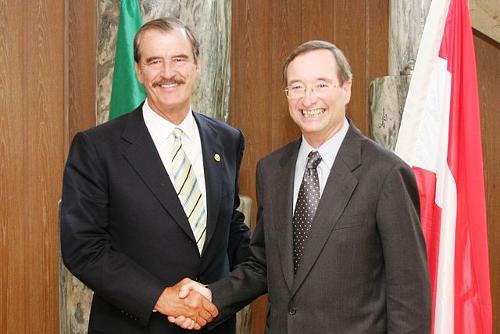 Mexican president Vicente Fox (left) and Austrian politician Christoph LeitlPhoto: Oliverdg CC 3.0 Unported no changes made
Mexican president Vicente Fox (left) and Austrian politician Christoph LeitlPhoto: Oliverdg CC 3.0 Unported no changes made
The July 2006 elections were unclear, two candidates claimed the winnings. After two months of wrangling over the results, the Electoral Tribunal awarded the victory in the elections to Calderón, who obtained 230,000 more votes than López Obrador. The latter, however, maintains that his votes had been stolen. Even before Calderón officially takes power from outgoing President Fox on December 1, López Obrador is inaugurated as alternate president. In the years 2007 and 2008, Calderon made the war on drugs the spearhead of his policy.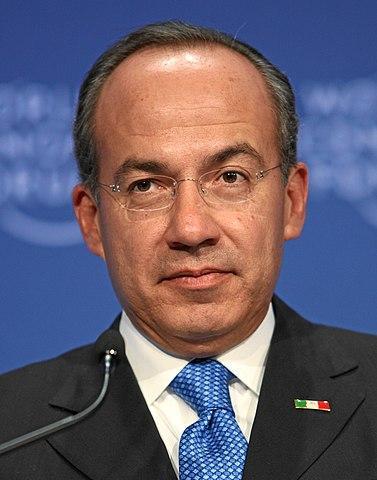 Felipe de Jesús Calderón Hinojosa, MexicoPhoto: World Economic Forum / Photo by Remy Steinegger CC 2.0 Generic no changes made
Felipe de Jesús Calderón Hinojosa, MexicoPhoto: World Economic Forum / Photo by Remy Steinegger CC 2.0 Generic no changes made
Schools will be closed in April 2009 due to the Mexican flu outbreak. In July, the opposition made up a lot of ground in congressional elections, winning 48% of the vote. In December 2009, the government announced that the number of deaths from the war on drugs was 6,500. In March 2010, Calderon called on the US to share responsibility for drug trafficking. In December 2012, Enrique Pena Nieto becomes the new president of Mexico.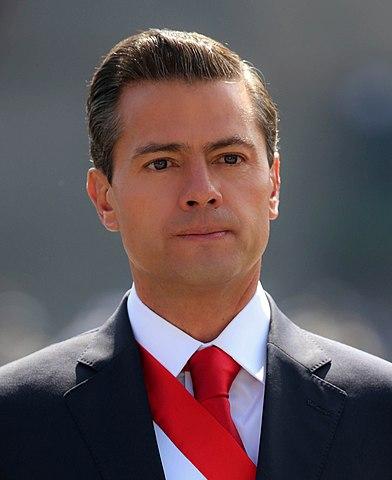 Enrique Pena Nieto, MexicoPhoto: https://www.flickr.com/photos/presidenciamx/ CC 2.0 Generic no changes made
Enrique Pena Nieto, MexicoPhoto: https://www.flickr.com/photos/presidenciamx/ CC 2.0 Generic no changes made
Miguel Angel Trevino Morales of the Zetas drug cartel is arrested in July 2013. The fight against the cartels continues in 2014, with the lowest point being the disappearance of 43 students in November. In June 2015, the ruling party loses a number of seats but retains the majority in the elections. Top drug boss Joaquin "El Capo" Guzman escapes from prison but is arrested again in January 2016. In February 2016, Pope Francis visits Mexico. He speaks to Mexicans not to give up their fight against drugs, violence and corruption.
In March 2016, Mexico declared that it was not willing to pay for the wall that then-presidential candidate Donald Trump says he wants to build to combat immigration. In January 2017, Guzman is extradited to the United States, within his cartel a power struggle ensues that is accompanied by a lot of violence.
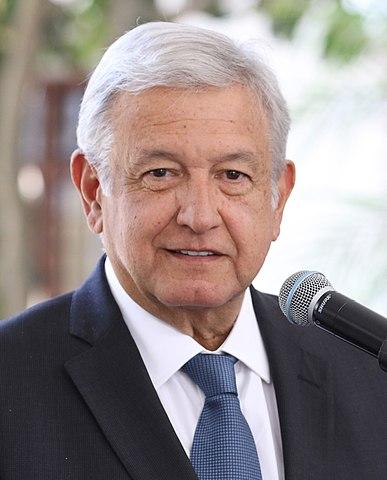 Andres Manuel López Obrador, MexicoPhoto: Agencia de Noticias ANDES CC 2.0 Generic no changes made
Andres Manuel López Obrador, MexicoPhoto: Agencia de Noticias ANDES CC 2.0 Generic no changes made
Left-wing former mayor of Mexico City, Andres Manuel López Obrador, is inaugurated president in december 2019 after winning an overwhelming victory in the July presidential election.
Sources
Daling, T. / Mexico : mensen, politiek, economie, cultuur, milieu
Koninklijk Instituut voor de Tropen / Novib
Dunlop, F. / Mexico
Van Reemst,
Mexico
Cambium
Rokebrand, R. / Mexico
Gottmer/Becht
Rummel, J. / Mexico
Chelsea House Publishers
Wagenvoort, E. / Reishandboek Mexico
Elmar
CIA - World Factbook
BBC - Country Profiles
Copyright: Team The World of Info